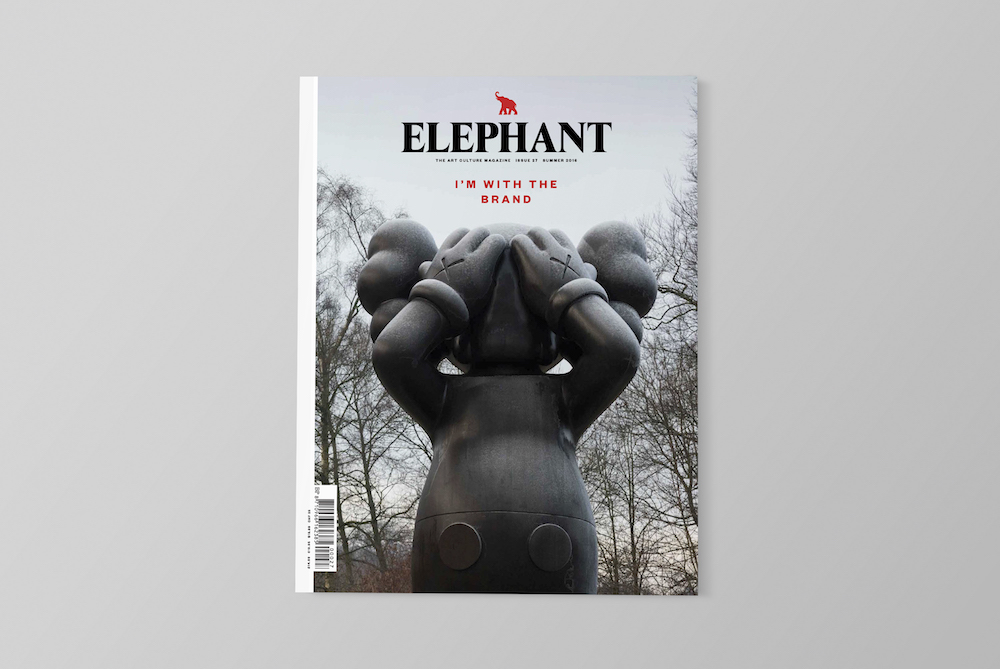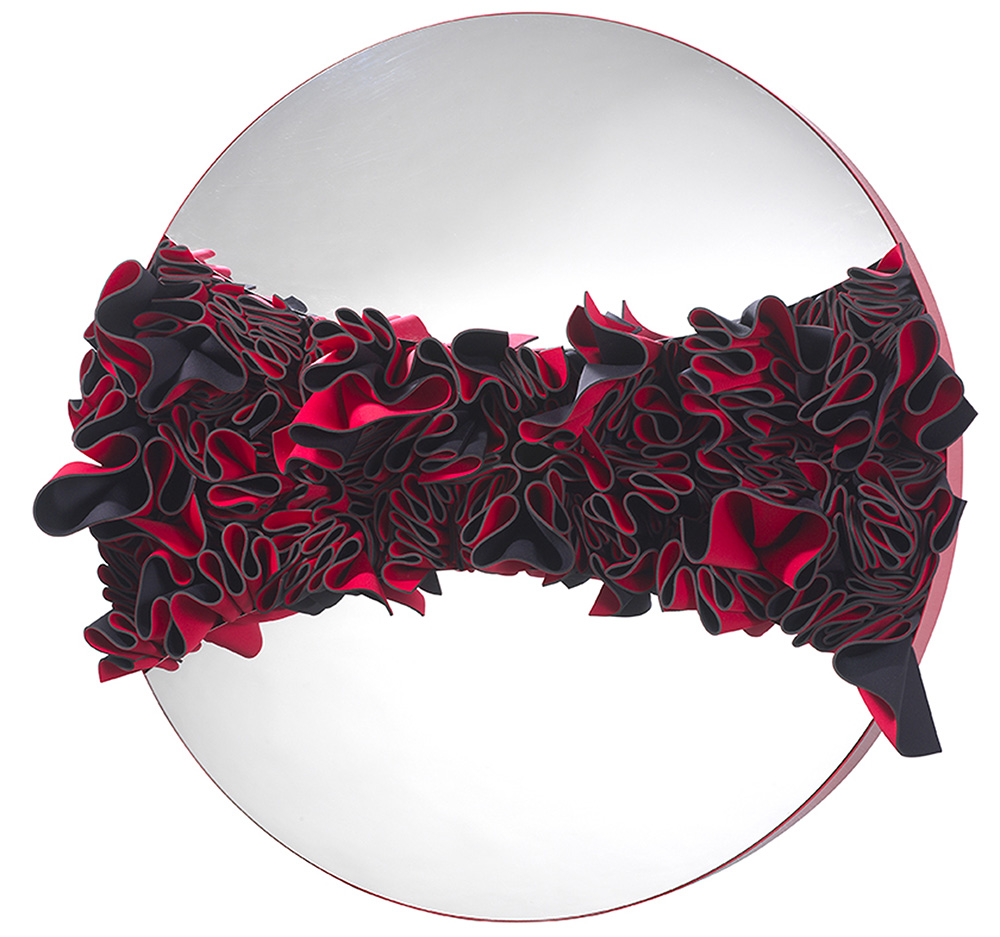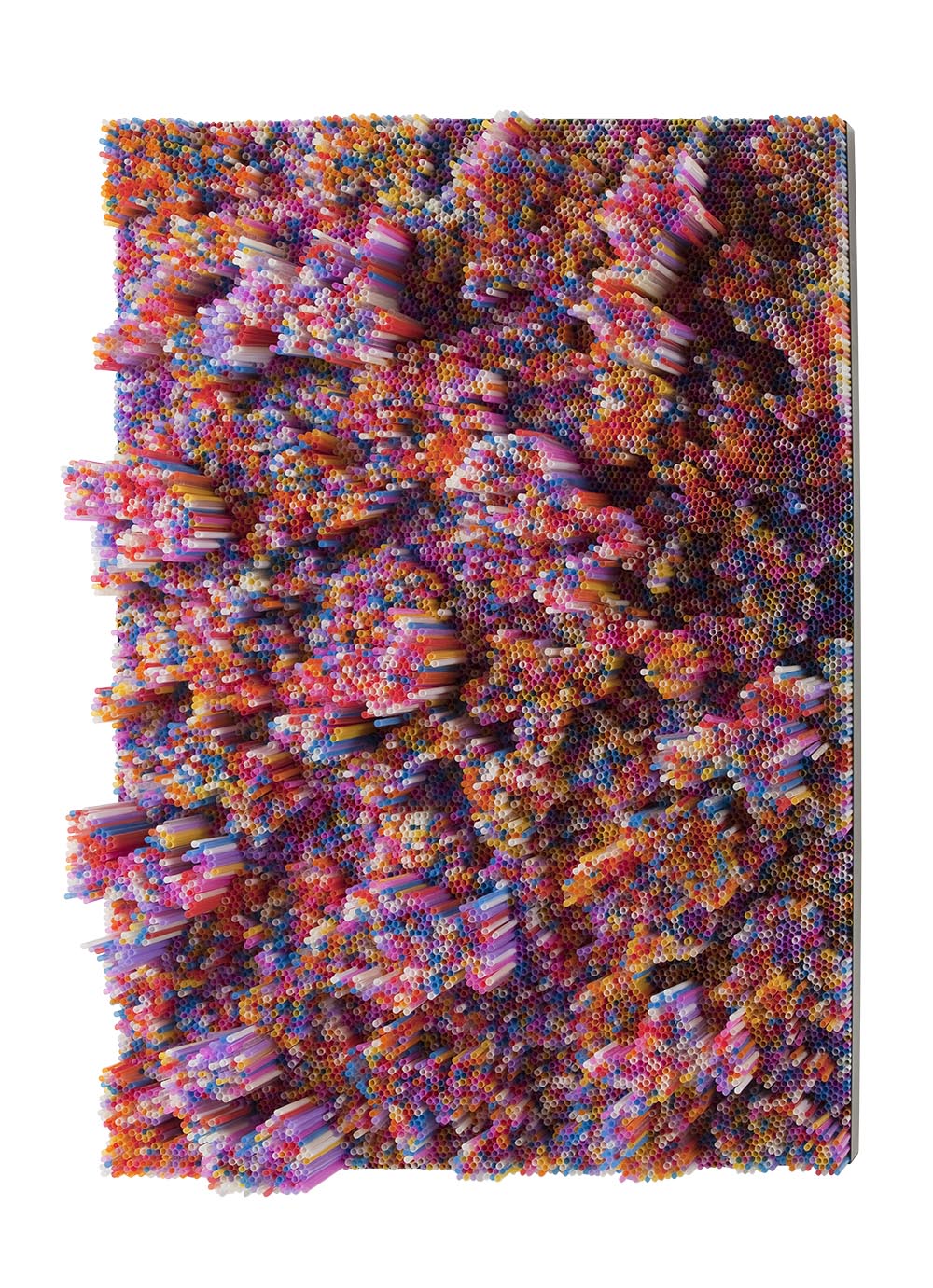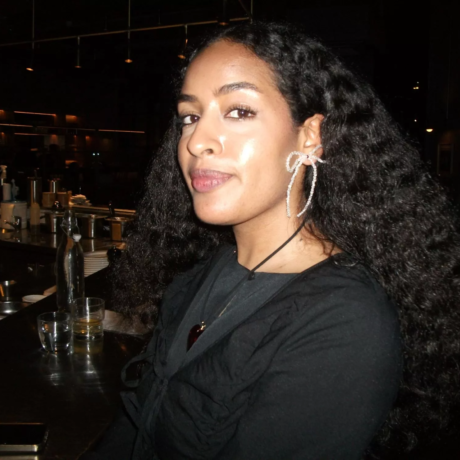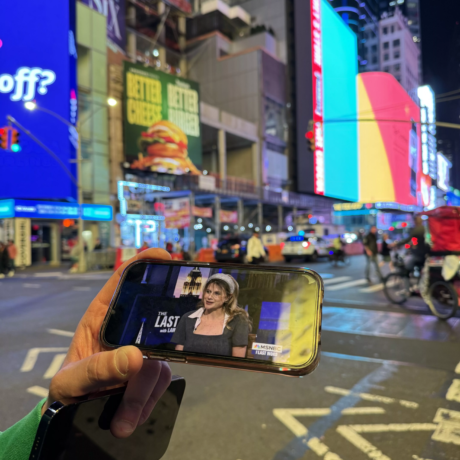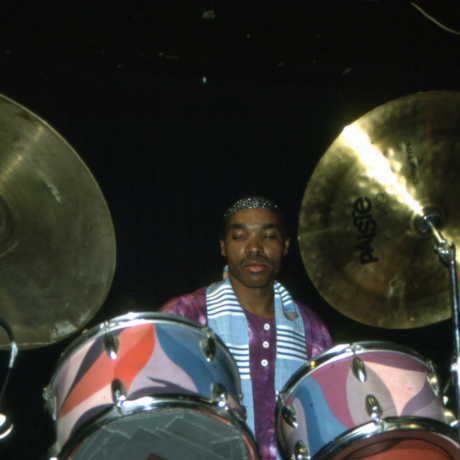
Take a quick glance at Francesca Pasquali’s vast, painstakingly constructed works and you may not immediately realize that their colour-laden, joyful surfaces are in fact constructed from a mass of everyday objects—typically, straws, elastic bands and plastic cups. ‘My work is always very manual,’ the Italian artist tells Emily Steer as she prepares for her upcoming exhibition at London’s Tornabuoni Art, ‘the result of a slow, meticulous and difficult process.’
This feature originally appeared in Issue 27.
Can you tell me a little about the forthcoming show?
Every time I plan a new show I start with the idea of the relationship of my works with their surrounding environment. These objects, or works, are always conceived after having thought about the space and about the site-specific installation that will fill it. Though we have not yet finalized what will be on show, I am interested in making the installation an interactive one. London is an important place, one of the cathedrals of contemporary art: I want to make work that is worthy of the city hosting me and obviously of the gallery.
How far are you influenced by the particularities of a gallery’s space?
The shape of the work is often a direct consequence of the exhibition space, before even the materials of the installation and of the works that will be exhibited are chosen. My work emerges from two core principles: the observation of nature and the relationship with the surrounding environment.
Plastic items such as cups and cutlery are often thought of as being connected with overconsumption and waste. What prompted you to explore their beauty instead?
I am interested in plastic and industrial materials, both those that are used for technical purposes—and therefore used as construction materials—and those destined to become commercial products. The first are often monochromatic, simple, inert in terms of their aesthetic appeal: neoprene, for instance, or expanded polyurethane. The second use colour for all its aesthetic potential and for the fascination it can hold for the consumer. I like to use both. The first are revitalized through the artistic process, through weaving and composition. The second have a spontaneous energy that I have to ‘tame’ by transforming them in new ways.
Is your process very meticulous and hands-on, and do you see this element as part of the work itself?
My work is always very manual, the result of a slow, meticulous and difficult process. Rarely do I draw or sketch my projects, I only jot down a few ideas and indications of colour, shape, material, and then little by little my relationship with the work starts to evolve through its creation. The works come to life as I’m making them and I get excited to see them take shape in my hands.
Do you feel the influence of Italy itself on your practice? You’ve worked with a few Italian designers in the past.
To be an Italian artist means having in one’s dna a natural genealogy of references that determine your artistic process. The problem of perspective and the harmonious construction of everything that exists; the work on colour and on its relationship with nature; mimesis as imitation and challenge between nature and artifice, and the great, extraordinary world of the alchemy of things—these are themes that all come from the Renaissance, and with which all modern and contemporary art must contend. I am very conscious of these themes; the problem and weight of our great aesthetic tradition arose among the neo-avant-gardes of the 1960s and 1970s, up to Arte Povera. Though of course what is happening today is also central to my process: I grew up in awe of the works of Fontana, Burri, Castellani; through their work I experienced the expansion of the artwork into its surroundings and I admire Arte Povera’s choice of going back to the simple beauty of humble, industrial materials, of waste even, in the face of a conditioned and ever-sadder society overrun with objects.
It’s been suggested that there is an autobiographical aspect to your practice.
I am a very introspective person, I often find myself lost in labyrinths of thoughts, dreams and projects, of emotions that sometimes overtake reason. I think that the energy of my works, sometimes strange, excessive, overflowing with folds and weaving, is the natural consequence of my way of seeing and conceiving things, of thinking about and designing my surroundings.
‘Francesca Pasquali’ shows at Tornabuoni Art, London, 28 June–17 September.
